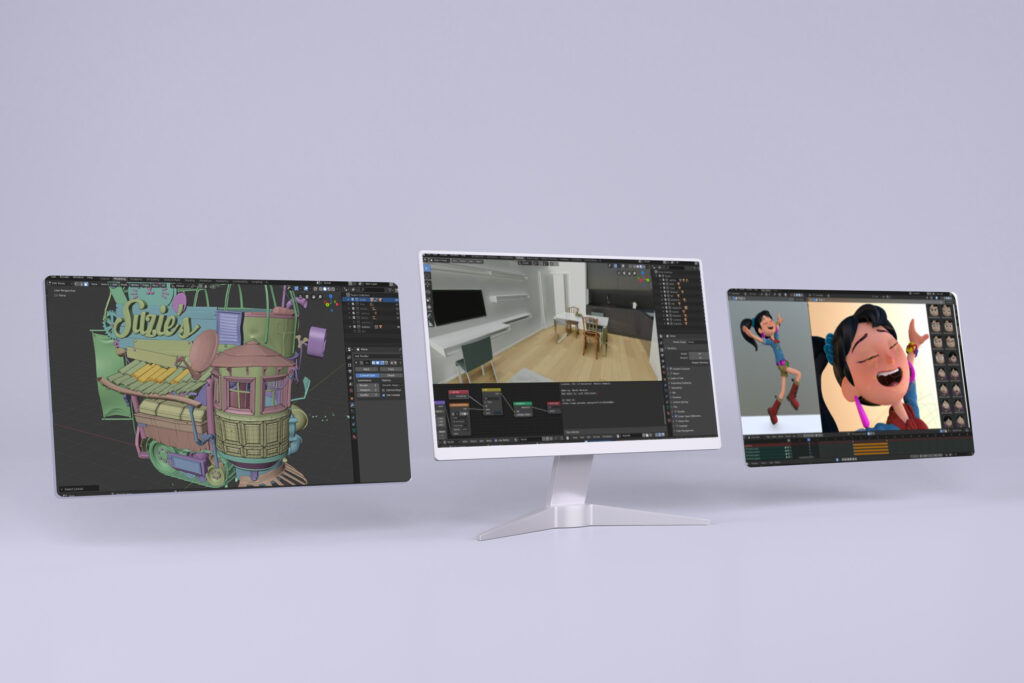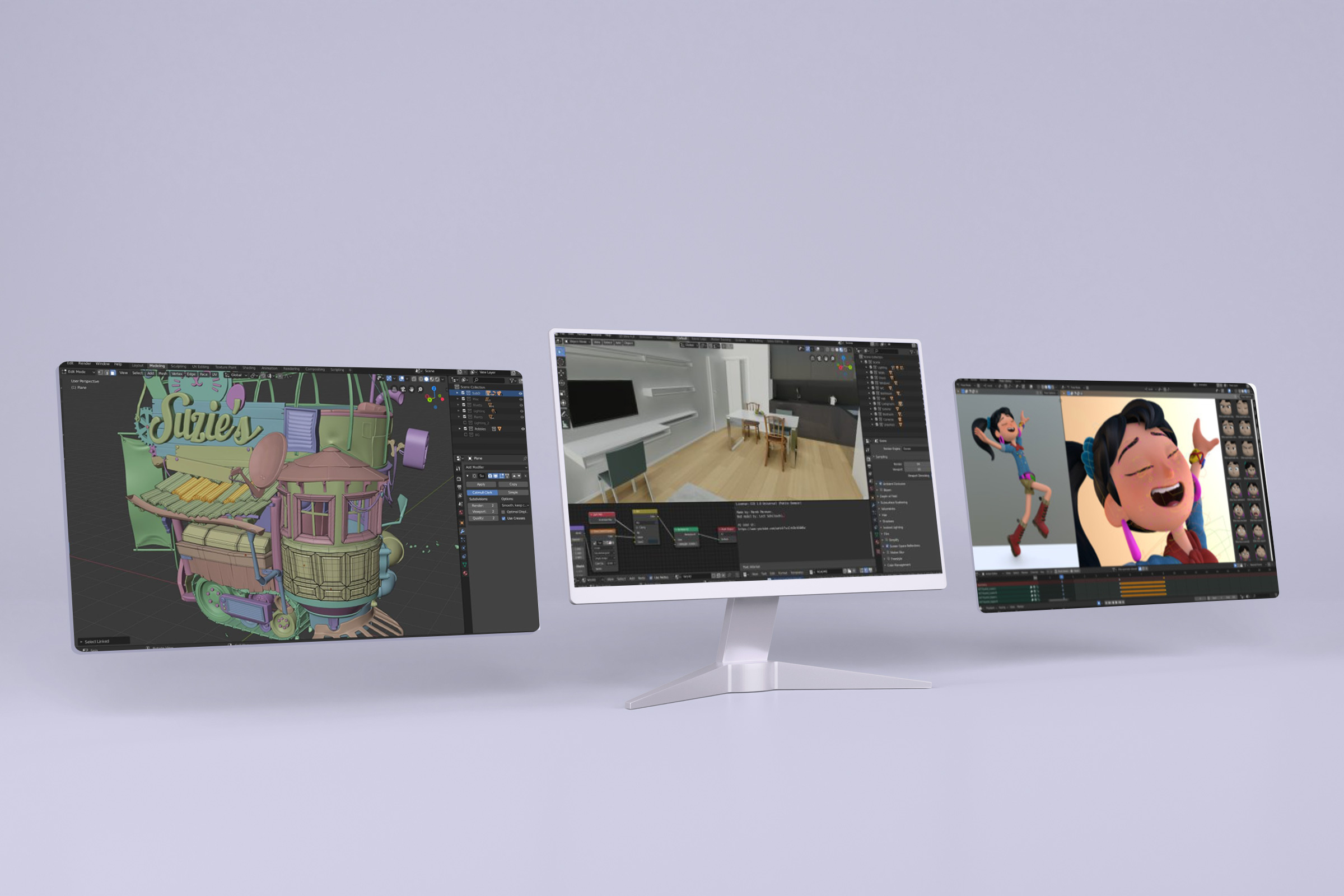
What is Blender Used For? Exploring the Versatile 3D Creation Suite
Blender is a free and open-source 3D creation suite. But what is Blender used for? This powerful software is utilized across a wide spectrum of industries and creative endeavors. From crafting stunning visual effects in blockbuster movies to designing intricate architectural visualizations, Blender’s capabilities are remarkably diverse. This article delves into the myriad applications of Blender, exploring its features and highlighting its impact on various fields.
A Brief Overview of Blender
Before exploring the specific uses, it’s essential to understand what Blender offers. Blender is a comprehensive 3D creation toolset that includes features for:
- Modeling: Creating 3D objects and characters.
- Sculpting: Refining models with organic details.
- Animation: Bringing characters and objects to life.
- Rendering: Generating realistic or stylized images and videos.
- Video Editing: Assembling and editing video footage.
- Visual Effects (VFX): Adding special effects to live-action footage.
- Simulation: Simulating physics, such as cloth, fluids, and particles.
- Game Development: Creating assets and game logic for interactive experiences.
The open-source nature of Blender means it’s free to use, distribute, and modify, fostering a vibrant community of users and developers who contribute to its continuous improvement. This collaborative environment ensures that Blender remains at the forefront of 3D technology.
Key Industries and Applications of Blender
Film and Television: Visual Effects and Animation
One of the most prominent uses of Blender is in the film and television industry. What is Blender used for in this context? It serves as a vital tool for creating visual effects (VFX) and animated content. Many independent filmmakers and studios leverage Blender’s capabilities to produce high-quality effects without the hefty price tag associated with proprietary software. Some notable examples include:
- Next Gen (Netflix): This animated feature film utilized Blender extensively for its character animation and visual style.
- Captain Wook (Short Film): Showcasing Blender’s potential for creating cinematic short films.
- Countless independent films and commercials.
Blender’s robust compositing tools allow artists to seamlessly integrate CGI elements with live-action footage, creating believable and visually stunning scenes. The animation tools are equally powerful, enabling the creation of expressive characters and dynamic movements.
Game Development: Asset Creation and Prototyping
The gaming industry also benefits significantly from Blender’s capabilities. What is Blender used for in game development? It is used for creating 3D models, textures, and animations that are essential for building immersive game worlds. Game developers can use Blender to:
- Model Characters and Environments: Create detailed characters, buildings, and landscapes.
- Generate Textures: Produce high-resolution textures to enhance the visual fidelity of game assets.
- Animate Game Characters: Rig and animate characters for realistic movement and interactions.
- Prototype Game Mechanics: Quickly create and test game mechanics using Blender’s built-in game engine (though this is less common now with the rise of more specialized game engines).
While Blender is not typically used as the primary game engine for large-scale commercial games, it’s an invaluable tool for asset creation and prototyping. The ability to export models and animations to popular game engines like Unity and Unreal Engine makes Blender a versatile part of the game development pipeline. [See also: Exporting Blender Models to Unity]
Architecture and Design: Visualization and Presentation
Architects and designers use Blender to create stunning visualizations of their projects. What is Blender used for in architecture? It allows them to:
- Create Realistic Renderings: Generate photorealistic images and animations of buildings and interiors.
- Explore Design Options: Experiment with different materials, lighting, and layouts.
- Present Projects to Clients: Showcase designs in an engaging and interactive way.
Blender’s rendering capabilities, combined with its modeling tools, enable architects to create compelling presentations that effectively communicate their design vision. The ability to create walkthrough animations allows clients to virtually experience the space before it’s even built.
3D Printing: Model Preparation and Optimization
The rise of 3D printing has created a new demand for 3D modeling software. What is Blender used for in 3D printing? It is used for:
- Creating 3D Models for Printing: Design objects specifically for 3D printing.
- Preparing Models for Printing: Ensure models are watertight and optimized for the printing process.
- Repairing Mesh Errors: Fix any errors in the model that could cause printing problems.
Blender’s sculpting tools are particularly useful for creating organic shapes and detailed models that are difficult to achieve with traditional CAD software. The ability to export models in various formats compatible with 3D printers makes Blender a valuable tool for hobbyists and professionals alike.
Motion Graphics and Advertising: Creative Visuals
Motion graphics designers and advertisers use Blender to create eye-catching visuals for commercials, explainer videos, and social media content. What is Blender used for in this field? It’s used for:
- Creating Animated Logos and Titles: Design dynamic and engaging logo animations.
- Generating Product Visualizations: Showcase products in an appealing and informative way.
- Producing Explainer Videos: Create animated videos that explain complex concepts in a simple and visually engaging manner.
Blender’s animation and rendering capabilities allow designers to create high-quality visuals that capture attention and effectively communicate their message. The software’s flexibility makes it suitable for a wide range of motion graphics projects.
Scientific Visualization: Data Representation
Scientists and researchers use Blender to visualize complex data sets and create simulations. What is Blender used for in scientific visualization? It enables them to:
- Visualize Molecular Structures: Create 3D models of molecules and proteins.
- Simulate Fluid Dynamics: Visualize the flow of fluids and gases.
- Represent Statistical Data: Create 3D graphs and charts to visualize statistical data.
Blender’s ability to handle large data sets and create visually appealing representations makes it a valuable tool for scientific research and communication. [See also: Scientific Visualization with Open Source Tools]
The Benefits of Using Blender
There are several compelling reasons to choose Blender for 3D creation:
- Free and Open-Source: Blender is completely free to use, distribute, and modify.
- Comprehensive Feature Set: Blender offers a wide range of tools for modeling, animation, rendering, and more.
- Cross-Platform Compatibility: Blender runs on Windows, macOS, and Linux.
- Large and Active Community: Blender has a large and active community of users and developers who provide support and contribute to its development.
- Customizable: Blender can be customized with Python scripts and add-ons to extend its functionality.
Getting Started with Blender
If you’re interested in learning Blender, there are many resources available online:
- Blender’s Official Website: The official website offers documentation, tutorials, and downloads.
- Online Courses: Platforms like Udemy, Coursera, and Skillshare offer Blender courses for beginners and advanced users.
- YouTube Tutorials: YouTube is a great resource for finding free Blender tutorials.
- Community Forums: BlenderArtists and other online forums are great places to ask questions and get help from other users.
Conclusion: The Power and Versatility of Blender
So, what is Blender used for? As this article has demonstrated, Blender is a remarkably versatile 3D creation suite with applications spanning numerous industries. From film and game development to architecture and scientific visualization, Blender empowers creators to bring their ideas to life. Its free and open-source nature, combined with its comprehensive feature set and active community, makes it an invaluable tool for anyone interested in 3D creation. Whether you’re a seasoned professional or just starting out, Blender offers the tools and resources you need to succeed in the world of 3D.

